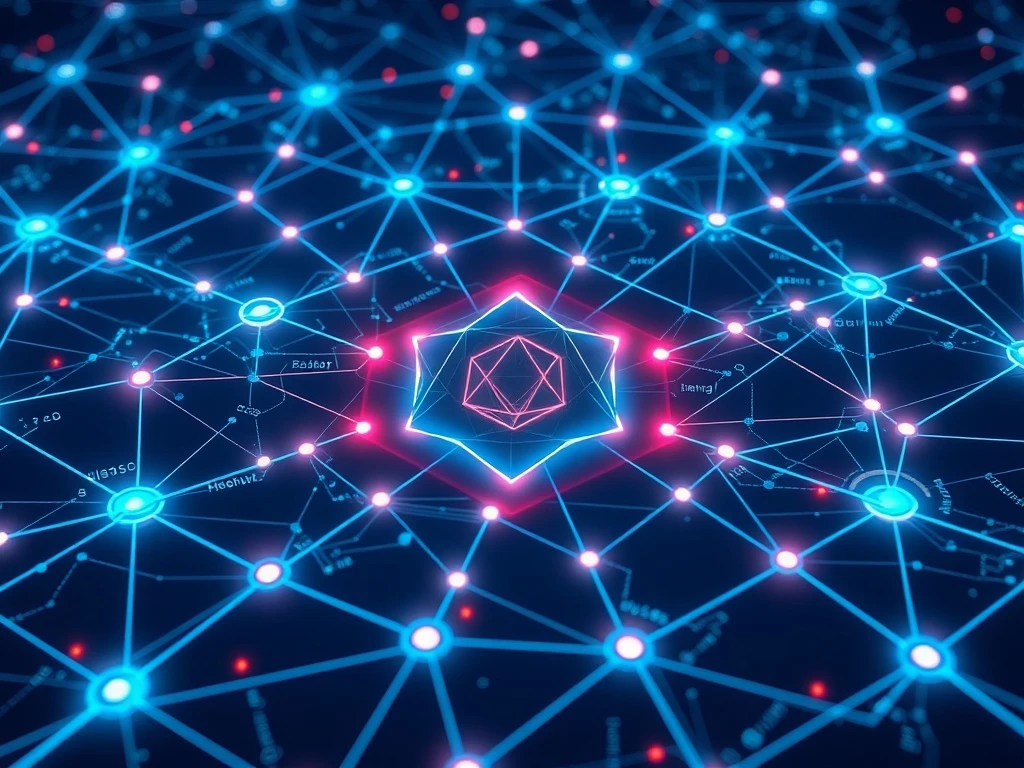Polygon’s Critical Hard Fork Goes Live: Unveiling Heimdall 2.0’s Transformative Impact

For anyone deeply invested in the world of decentralized finance and blockchain technology, the news of a major network upgrade always sparks significant interest. This week, the Polygon ecosystem is abuzz with the deployment of what its CEO, Sandeep Nailwal, has dubbed its ‘most complex’ hard fork to date. This isn’t just another routine update; the Polygon hard fork, known as Heimdall 2.0, represents a pivotal moment for the Polygon PoS blockchain, promising substantial improvements in performance, security, and user experience.
Understanding the Heimdall 2.0 Upgrade
The highly anticipated Heimdall 2.0 upgrade is more than just a name; it signifies a complete overhaul of Polygon’s core consensus layer. Going live on Thursday, this hard fork is designed to replace outdated components that have been part of the network since 2018 and 2019. Sandeep Nailwal emphasized the technical complexity, stating it’s the most intricate hard fork Polygon PoS has seen since its launch in 2020. This significant architectural shift aims to fortify the network’s backbone, preparing it for future scalability and innovation.
Key aspects of the Heimdall 2.0 upgrade include:
- Replacement of Legacy Infrastructure: Swapping older, foundational code with modern, more efficient components.
- Enhanced Backbone: Strengthening the core consensus mechanism of the Polygon PoS blockchain.
- Improved Upgradeability: Making the network more adaptable to future technological advancements and updates.
Boosting the Polygon PoS Blockchain’s Performance
One of the most exciting outcomes of this upgrade for the Polygon PoS blockchain is the dramatic improvement in network finality. The new update is set to reduce the blockchain’s finality to approximately five seconds. This reduction is a game-changer, as it significantly speeds up transaction confirmation times, making the network more responsive and efficient for users and applications alike. Faster finality directly translates to a smoother, more immediate user experience, particularly for high-frequency transactions and decentralized applications (dApps) requiring rapid confirmation.
Beyond speed, the Heimdall 2.0 upgrade also minimizes the chance of chain reorganizations beyond two blocks. Chain reorganizations, while a natural part of blockchain operation, can sometimes lead to temporary inconsistencies. By reducing their likelihood and depth, the network becomes more stable and predictable. This enhanced stability is crucial for:
- Increased Network Reliability: Users can have greater confidence in the immutability of their transactions.
- More Secure Bridges: Cross-chain bridges, vital for interoperability within the broader crypto ecosystem, become inherently more secure and reliable when the underlying chain is stable.
Ensuring a Seamless Crypto Network Upgrade
A hard fork of this magnitude requires careful preparation and coordination. Sandeep Nailwal has actively urged node operators to prepare for the upgrade, emphasizing the importance of a smooth transition. While most validators had already upgraded their systems before the deadline, the call for preparedness ensures that the entire ecosystem is aligned. The upgrade process itself is designed to be efficient, taking about 30 minutes on the mainnet, with all necessary scripts and runbooks made available to operators.
However, it’s also important to acknowledge that temporary instability is a possibility during such a complex operation. Nailwal advised the community to be cautious, as the system upgrades its core consensus engine. Specifically, Heimdall’s finality will temporarily lag by about three hours during the upgrade process. This means the PoS chain’s ability to finalize blocks might pause or slow down for this duration. This transparency from Polygon’s leadership helps manage expectations and ensures the community is well-informed, contributing to a smoother crypto network upgrade.
The Impact on Blockchain Finality and Future Direction
The reduction in blockchain finality to five seconds is a testament to Polygon’s commitment to continuous improvement and its strategic vision. This technical advancement not only enhances current performance but also builds crucial headroom for future upgrades. It lays the groundwork for shipping faster checkpoints and supporting more ambitious network developments down the line.
This technical leap follows recent significant changes within the Polygon Foundation’s leadership. Sandeep Nailwal recently assumed full executive control as the first CEO of the foundation, moving from a more decentralized governance structure. This shift aims to enable Polygon to move faster and more aggressively in a highly competitive layer-2 landscape. The successful deployment of Heimdall 2.0 under this new leadership structure demonstrates Polygon’s renewed focus and determination to solidify its position as a leading blockchain solution.
A Transformative Step Forward for Polygon
The deployment of the Heimdall 2.0 hard fork marks a significant milestone for Polygon. By tackling its ‘most complex’ upgrade, Polygon is not just enhancing its current capabilities but is strategically positioning itself for sustained growth and innovation in the competitive blockchain space. The improvements in finality, stability, and overall network performance underscore Polygon’s commitment to providing a robust and efficient platform for developers and users. As the crypto landscape continues to evolve, Polygon’s proactive approach to upgrades ensures it remains a frontrunner, ready to meet the demands of a rapidly expanding decentralized world. This upgrade is a clear signal of Polygon’s ambition to build a more resilient, scalable, and user-friendly blockchain ecosystem for the future.







